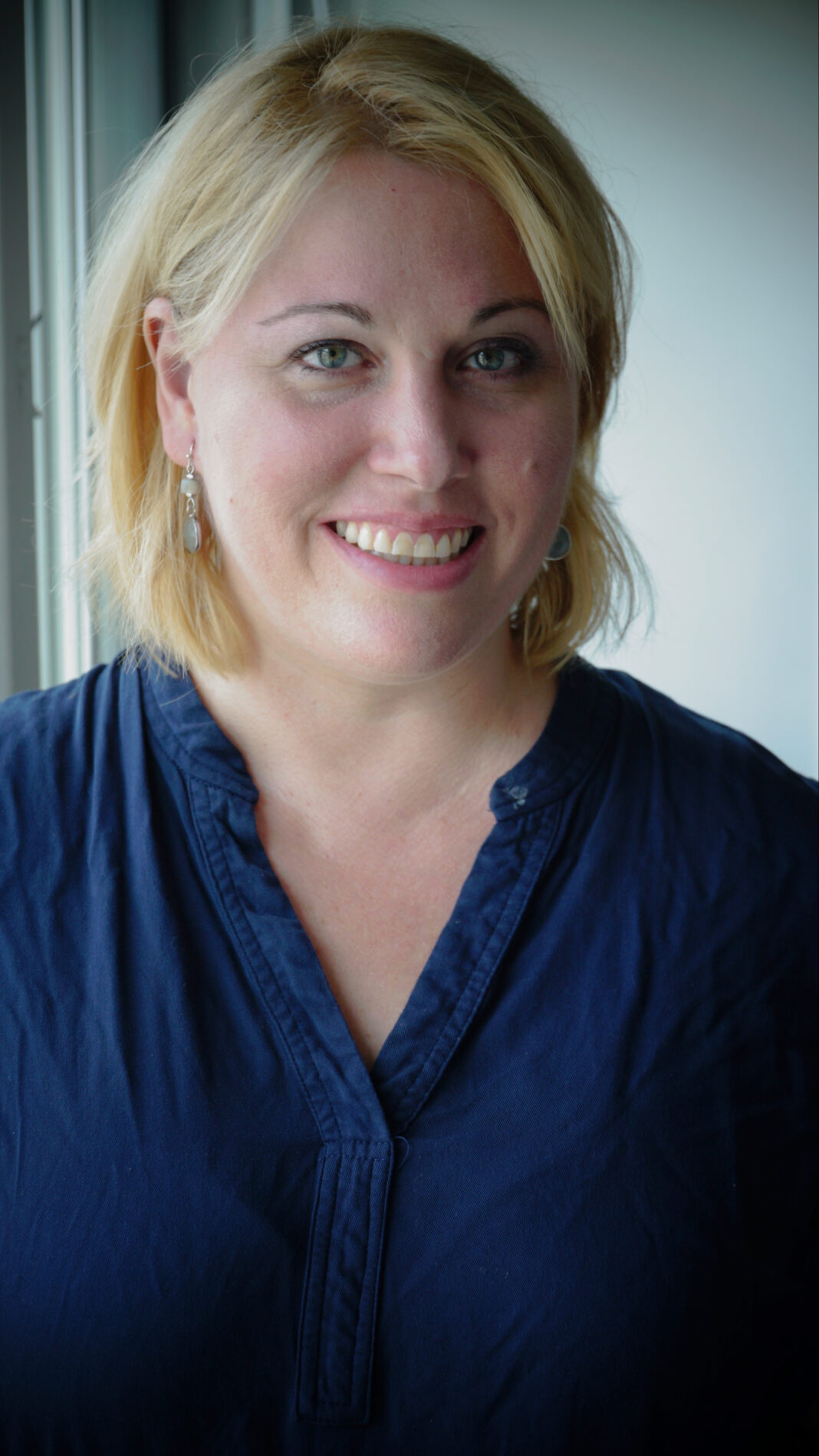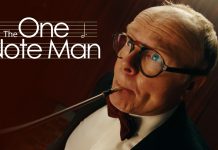Helen Alexis Yonov’s brand-new short film, THE GESTURE AND THE WORD, subverts the expected usage of social media and technological convenience in favour of hand-written postcards and the more emotional truth that certain old-fashioned ideals reveal.
You can view the trailer here:
Film And TV Now recently spoke with the director about the short and its’ impact.
FILM AND TV NOW: This is a very romantic short, with both subtext and visual motifs that shine through. What was the inspiration for the short film?
HELEN ALEXIS YONOV: For seven and a half years, I lived in Paris, France, where I wrote THE GESTURE AND THE WORD. I immersed myself in the romantic nature of the city and would walk around Paris for hours and people watch.
This led me to my main character, the postman Gilbert. Ideas were pulled from everyday life, people I knew, interests I had, and my experiences. My friend Nico inspired Eloïse’s character, because of her interest in flowers and burlesque. My love for travel is seen in Eric’s journey around the World. As an artist, portraying emotion through a visual medium is important; however, as a writer the combination of the written word and art also comes naturally together.
Many of the visual motifs and romantic nuances came from my life experiences. After attending the RISD pre-college summer program in 1996, my friends and I would create homemade postcards from our artwork and send them to one another. Sometimes our postcards (or handwritten letters and even emails) would take on the style of the letters of the great poets and literary authors whose romantic ideas were captured in flowery prose.
Love is my favorite theme. I love how in the past men courted women, wrote love letters, and went out of their way to express their feelings. In the modern world, women have also become more confident in expressing themselves, too. I enjoy mixing the traditional romantic gestures with a present day portrayal of the modern woman. She is still desirable, romantic, and courted by a suitor while having confidence, intelligence, and independence. She knows what she wants and can pursue her love interest, as well.
FTVN: Flowers and physical mail play a crucial part in this film, a rarity in today’s very IT-minded and fast tech access world. How important are these older traditions in the expression of love?
HAY: Throughout history, flowers have been paired with romantic meaning and historical context. A carefully chosen arrangement would signify to the woman a man’s intentions and emotions. In THE GESTURE AND THE WORD, the flower shop owner Eloise knows the romantic, hidden meaning of every flower. There is a purpose beyond visual beauty for her.
I am part of a generation where we didn’t have computers or the internet until I was a pre-teen. We had pen-pals from around the world. We wrote in journals. We composed and received hand-written love letters. There is an intimacy and artistry found with cursive writing that will be lost if they no longer teach it in schools. Perhaps we have lost a bit of magic with technology.
Children and adults both spend hours on their phones, iPads, and computers. They watch TV or play video games. They want to be social media influencers. I fear that much of the IT-minded and fast tech access world is shallow and cut us off from the World around us. However, I do not mean to say that all technology is bad. Obviously it helped me make my film. My time is definitely made more productive and efficient by its existence.
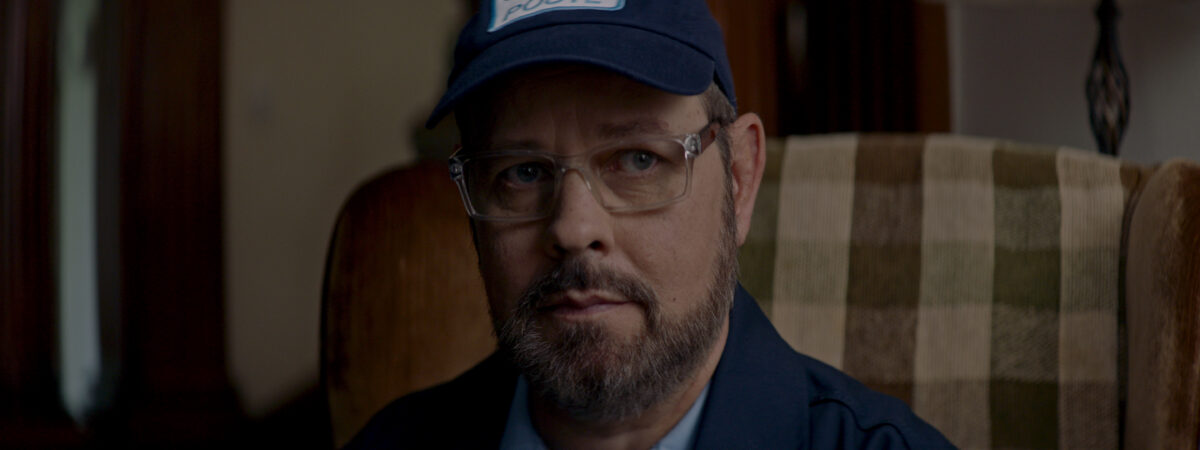
FTVN: Tell us about your cast.
HAY: James Michael Tyler and I have been friends for many years and I have always wanted to work with him. When we sat down to discuss the role, we both agreed that our beloved Postman was on the spectrum. The sensitivity with which he plays Gilbert feels honest to me. James Michael Tyler acts with such reserve and hidden emotion; afraid of exposing his soul to others for fear of being hurt or ridiculed.
I met Paul Dooley through a supportive friend. When Paul Dooley accepted the role of Mr. Rostalle, I was grateful and excited. At one moment during the filming, as he recited a love letter, I sat in disbelief; surprised that I had written the dialogue. Paul Dooley’s sensitive portrayal of a blind widower brought a depth to a character who is an important poetic voice in the film.
Nicole LaLiberté’s Eloïse has a delicate sensitivity and a whimsical quality. The flower shop is a unique world where Eloïse knows every flower’s meaning. She uses flowers as an emotional bridge; a way to bond or help customers lovingly express themselves. Flowers are how she connects and expresses her own feelings, which Nicole LaLiberté is able to do with such a natural presence on screen.
Aurore is portrayed by Roxane Mesquida, a French actress that I sought out specifically. The script was written in Paris and I wanted to subtly infuse the film with a French je ne sais quoi. Roxane Mesquida has a classic beauty that is delicate, yet strong. While the Gilbert-Eloïse pairing is shy and tentative, the Aurore-Eric couple shows a relationship that is Worldly and passionate.
Andrew Creer portrays Eric, who also brings a sense of poetry to the screen. We were able to connect with him through one of producer Andrea Fellers’ friends. The character was inspired by a young World traveller whose handsomeness was paired with a poetic, adventurous soul. Andrew Creer was able to portray a softness, as well as an independent man whose experiences bring him back home.
FTVN: Tell us about your production team.
HAY: Producer Andrea Fellers is an incredible producer who supported my vision. Through her hard work and focused work ethic, we were able to bring the film to life. We had worked together since 2007 when she came onboard as a producer on my short film, THE WEIGHT OF IT.
I have worked with cinematographer Matt Rodgers on several projects. With the use of visual reference guides and storyboards, he was able to transform my ideas into gorgeous imagery. He understands my filmmaking aesthetic and style and is able to build off my initial ideas with precision, beauty, and respect.
Our first editor Hannah Sturwold put together our initial edit of the film and was able to create a pacing that complimented the story and its emotional arc. Our second editor Drew Rosas completed the project and was our Sound Designer, as well. He is extremely knowledgeable with a wealth of abilities. We also worked with colorist Edo Brizio.
Production Designer Anna Loesby has a fine imagination and quickly pulled sets together in the early morning hours under a great deal of pressure. Matthew Peridis was our amazing costume designer. He has a clear insight into how clothing paints a picture of the character. His idea that the colors of the flowers should match Eloïse’s dresses was a wonderful addition to the film. With the talent of make-up and hair stylist Alexandra Graniello, the actors’ looks were natural and truly reflective of their inner characters.
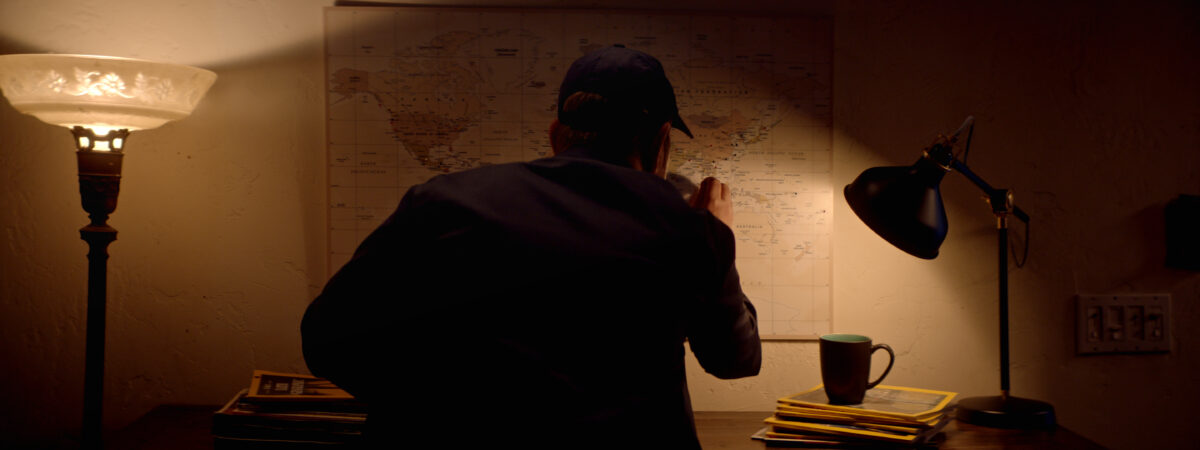
FTVN: You have some interesting songs and music cuts in the film. Tell us about the challenges and satisfaction in securing the services of your artists featured.
HAY: Our composer Craig Richey created the beautiful score for THE GESTURE AND THE WORD. During Eric’s traveling sequence, he composed a piece that reflected the individual countries that Eric travels to by using instruments that reflected the specific cultures, like the Spanish guitar in Spain and the balalaika in Russia.
For the burlesque montage, Craig Richey composed the original song, “Who’s Laughing Now,” which features singer Susan Lucas. Along with Lee Richey and Elaine Richey, he also performed the Beethoven and Mozart compositions, which created a sophisticated mood in Mr. Rostalle’s home. We were lucky to place a variety of great modern songs in the film.
I fell in love with Eilen Jewell’s “Only One”and we were able to get the rights. Producer Andrea Fellers’ relationship with singer-songwriter Sara Melson led to two of her songs, “So Thankful” and “Rather Have You,” being used in Eloise’s flower shop. Our end credits song, Parker Lane’s “Till the End,” came to us through its founder, Grammy award winning singer-songwriter-musician Printz Board. It is through our friendship that I was introduced to Beck Pete, whose song “Gently Break It” was also included in the film. So much of filmmaking comes together through the relationships you build over the years.
FTVN: You are also credited with the postcard art in the film which is a crucial plot device. How long have you been doing these and are there other forms of art you have done in the context of film-making?
HAY: The initial postcard idea involved Eric creating collages from artwork that he found on his travels; however, I decided that the simplest thing to do would be to draw the postcards by hand myself. Having a visual arts background, I hoped that I could “pull it off.”
I had been out of practice when I started making the postcards and it was my first true foray into working with color. Like a “baptism by fire,” I dove into the creation of these pieces and I must admit that I was pleasantly surprised by the outcome. My desire is to be completely involved in all aspects of film-making. Art is a way of accomplishing this.
I have found that my foundation in the visual arts has led me to explore other art forms, like painting, music, and photography. Drawing has led to an understanding of color as has photography, which has helped me with composition and working with subjects. Ever since I was a child, art has been a passion of mine and I have enjoyed using artwork to tell stories that are multi-layered.
Film-making is about creating layers. My aim is to make emotionally and visually rich films. I feel that is where art helps me. Art informs other artforms. One can lead to another. One can strengthen your command of another. Art has made my filmmaking (I hope) have more depth.
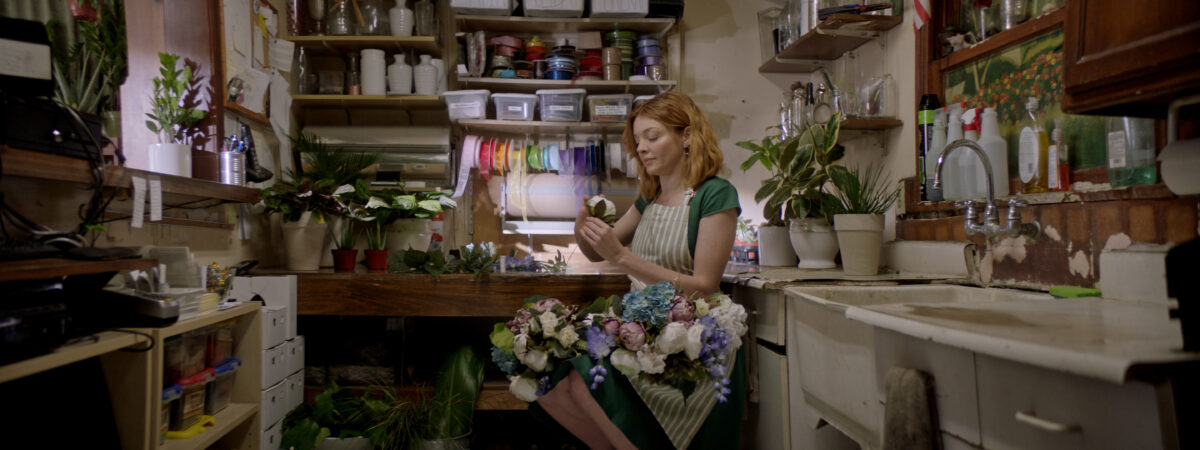
FTVN: How long did it take to shoot and where?
HAY: We shot the film in six days in various places in and around Hollywood, Los Feliz, the Hollywood Hills, Beachwood Canyon, and Koreatown. The bar and burlesque scenes were at the Lost Property Bar in Hollywood. The montage of Eric’s travels were shot in one Hollywood Hills location where we were able to create nine foreign locations.
When we were finished, we filmed Gilbert’s apartment inside the house. Eloïse’s flower shop was shot at Jasmine’s Gardens in Los Feliz. The homes of Mr. Rostalle and Aurore were filmed in the same home in Koreatown. Our days were jam packed with not only multiple scenes being shot in one location, but also multiple sets in a single place.
We did not have prep days for production designer Anna Loesby, so each location had to be dressed that morning. Our schedule was very intense, but our pre-production made it possible for us to manage the stress and time constraints.
The burlesque sequence is an integral part of the narrative. Was this something in the original script and what fascinates you overall about the burlesque world of performance?
Yes, the scene was in the original script and an important part of the plot from the beginning. As a woman, I find burlesque to be an empowering, creative, and liberating art form. Eloïse is inspired by my friend Nico, who has informed two aspects of her character – the burlesque dancer and the flower shop owner. It is also Nico’s confidence that inspired Bella Bliss’s character.
Eloïse’s interest in burlesque is seen in a very intimate dance and her somewhat timid nature shows someone new to it; however, the dynamic montage with the four experienced dancers shows the bold and empowering world of burlesque. Dance is a form of expression and what better way can a woman express herself safely in a romantic and sensual manner.
I am not a fan of an environment where women are objectified. What fascinates me is that burlesque is where women are in control and call the shots.
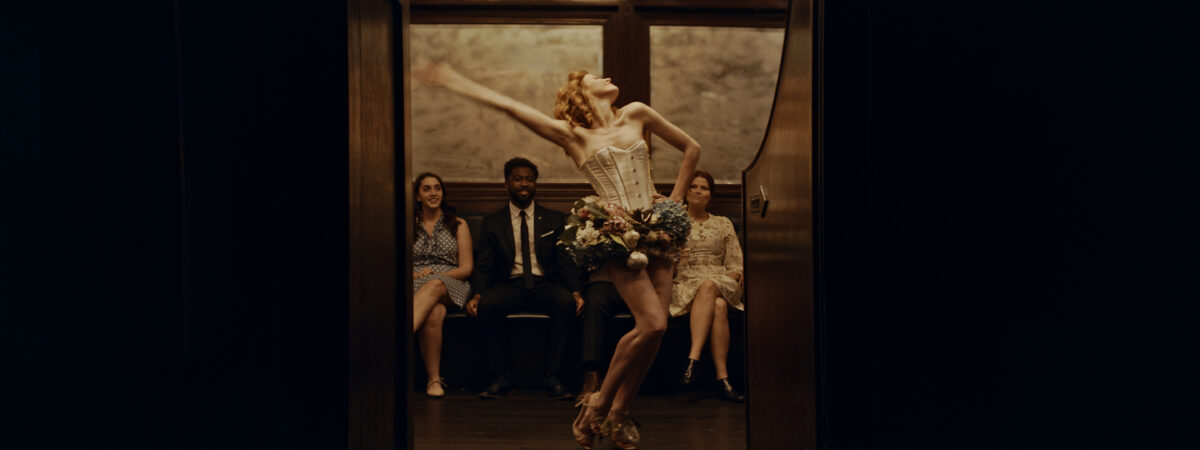
FTVN: Tell us about the sound design of the short.
HAY: I like the metaphor that film is like a palette of colorful paints. Sound design is one color while the other aspects of filmmaking make up the myriad of rainbow hues. Sound design is an important partner to visual storytelling. It is an aural representation of the story that affects our experiences without us realizing it. It needs to compliment the film and not draw people’s attention away from the story.
The amount of physical flowers in the flower shop was as important as the atmosphere that was created by the levels of dialogue, the ambiance, and the music that needed to properly fill the space. We worked on creating a clear, warm atmosphere that brought the audience into this magical world. It was important to have a warm roundness, much like the visual warmth that we created through cinematography, color correction, production design, and costumes.
I did not want a thin, hollow sound or to have a city feeling. Drew Rosas (Editor and Sound Designer) worked hard to incorporate a more nature-inspired atmosphere. When Eric was in the jungles of Malaysia, I wanted the audience to feel as if they were in a tropical paradise with him, which involved incorporating the sounds of wind rustling through the trees and the unseen wildlife of Southeast Asia.
I also felt that it was important to include the sound of a peacock during his time in Turkey. When the peacock is first seen on a postcard, its call is clearly heard. I wanted an exotic sound that hopefully connected Eric’s travels to Aurore’s emotional connection to his postcards.
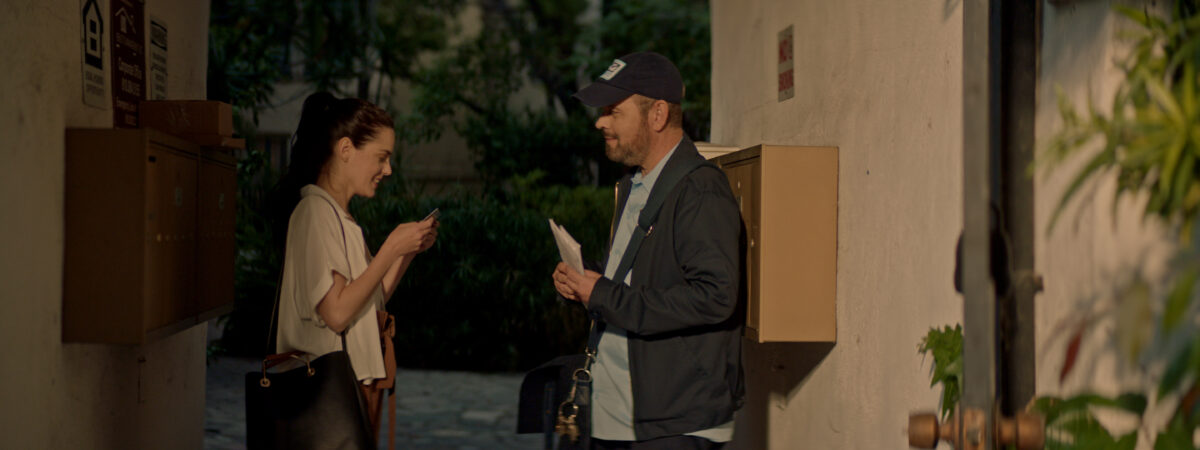
FTVN: You shot in 2.35:1 ratio. What were your filmic and visual influences on the film?
HAY: There are a few films that inspired me. The multi-layered approach and visual depth of AMELIÉ was one of these films. It was its attention to detail that caught my eye. Wong-Kar Wai’s IN THE MOOD FOR LOVE is also a film that greatly influences me. I love his use of bold colors, textures, patterns. Both films made sure that the cinematography, costumes, hair and makeup, and production design all have the same vision in mind.
These films also have an incredible use of music and composition. THE THREE COLORS TRILOGY: BLUE, WHITE, and RED by Krzysztof Kiesolowski also has had a major impact on my filmmaking, which uses a combination of cinematography and music to tell a story.
FTVN: How has COVID-19 affected your development as a film-maker?
HAY: The life of a film-maker has always been incredibly unstable, especially now during the pandemic. My motivation and focus has ebbed and flowed; however, it is important not to feel like a failure. This period has also been one of productivity and inspiration. I welcome this forced “break” as a time during which I can focus on developing my projects.
I have also begun pursuing other interests, like piano, singing, and painting. Pursuits that inform my film-making. With Covid, the timeline is unknown. It is frustrating, because the unfamiliar has made focusing difficult. How will the understandable costs of Covid safety measures affect film budgets, schedules, locations, cast, and crew? Will new styles of filmmaking be adopted in order to keep everyone healthy?
Covid has changed the playing field. It has changed the way I will proceed with my documentary series IN THE SHADOW OF THE STORM. Remote filmmaking and alternate distribution avenues are things that I am currently reconsidering and exploring. I have worked in the film industry for two decades and understand that our dreams are on a timeline that can be far different than that of reality.
However, I do not feel as if I am falling behind. Having both THE GESTURE AND THE WORD and the #METOO PSA – WE STAND TOGETHER currently traveling the festival circuit has helped me feel that my career is moving forward. Getting ready for the unknown is key regardless of the pandemic. We must be ready for the new opportunities that will present themselves once the pandemic is under control.
FTVN: What other themes would you like to explore in the future?
HAY: With the feature film version of THE GESTURE AND THE WORD, I am further exploring the romance theme, as well as the concept of self-confidence and self-love. I am also fascinated by “the romance of life,” which is found in the everyday moments, both big and small. I am interested in capturing the little things that are important or special to an individual or unrealized by someone.
Another feature – THE TIME OF THE WOLVES – touches upon the act of terrorism and shows the lives of several different women after an attack. The film is about unity, survival, perseverance, support, and love for your fellow human. I want to explore how different people can be connected through a unique experience and, through unity, overcome a World of hatred, racism, sexism, and/or homophobia.
IN THE SHADOW OF THE STORM is a documentary series on my father, which follows his journey from fleeing Latvia as a child refugee with his family to his diplomatic career around the world, which included his time as the last Naval Attaché to the former USSR and the first to Russia after the 1991 coup d’état. It was during his time in Moscow that he went in search of his long lost Lativan family. A timely tale, it shows much of the history of the world through the eyes of one man.
FTVN: Finally, what are you most proud of about the film?
HAY: I am overjoyed with how the film has come together as a complete piece. We put so much into the making of the film and a beautiful little gem was created out of our collaboration and artistry. I have had a hard time watching my work without a critical eye and even though I see things that I would like to do differently, I am very happy with the overall finished film. It is also the reactions that we have received that have made me very proud of the film, because it seems like it has brought a sense of peace and happiness to people during the pandemic.


